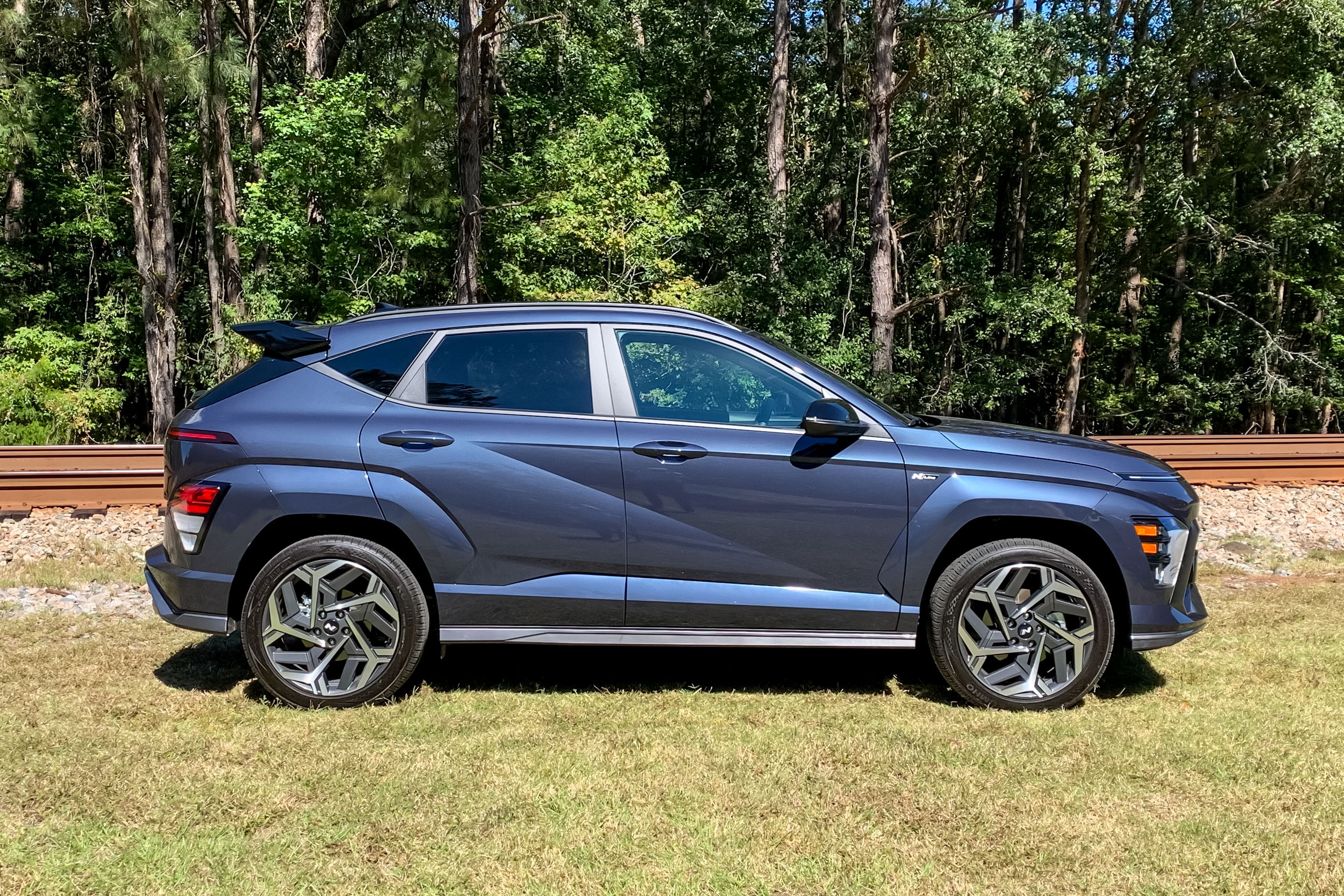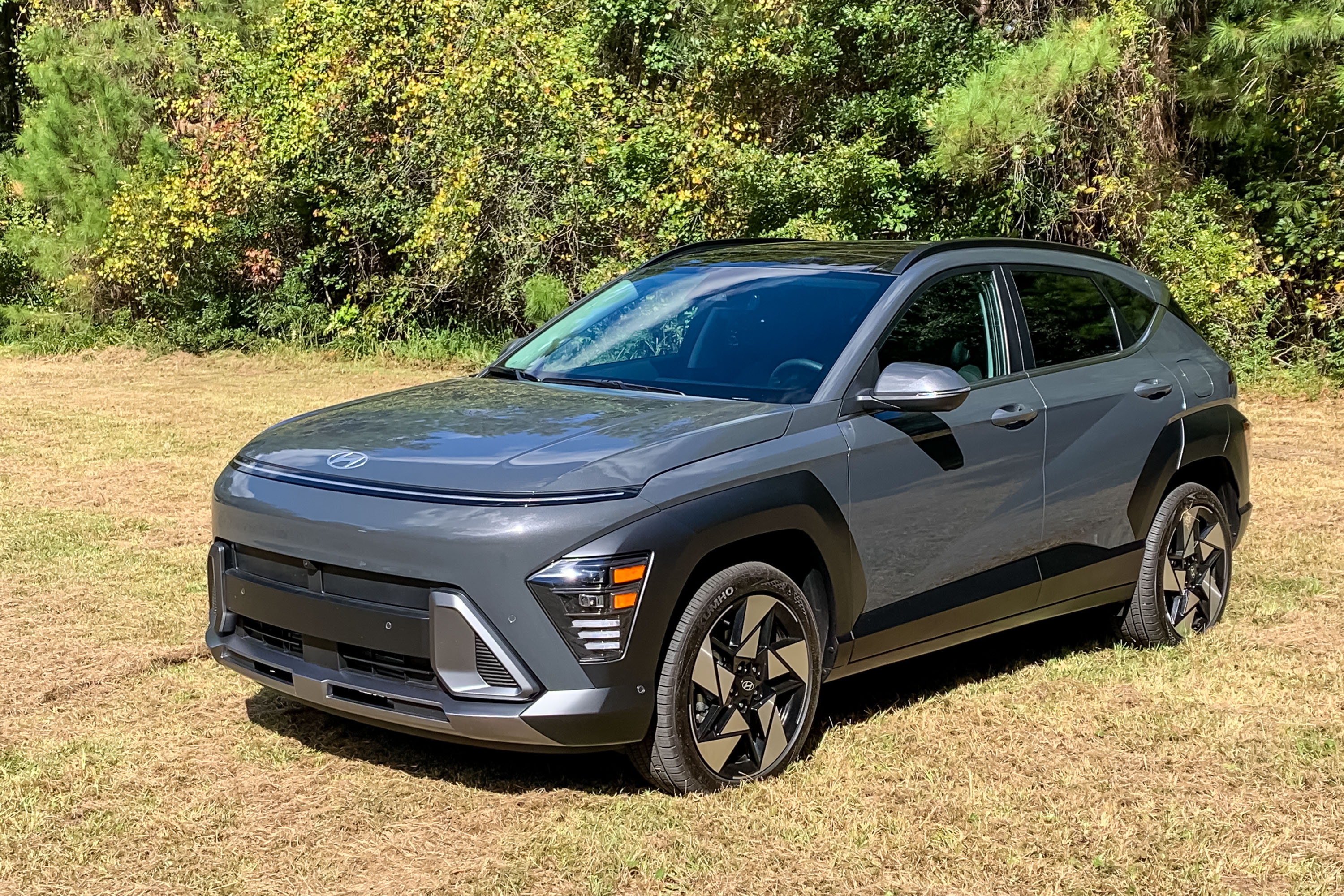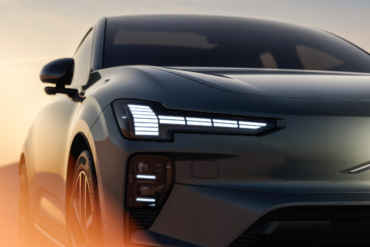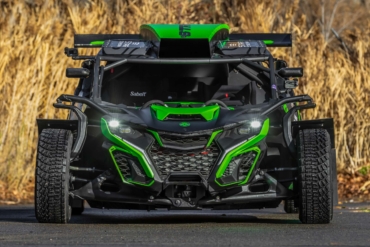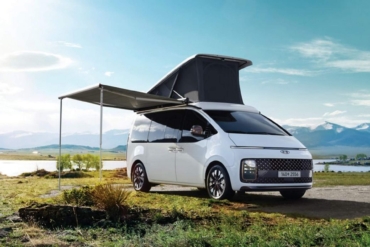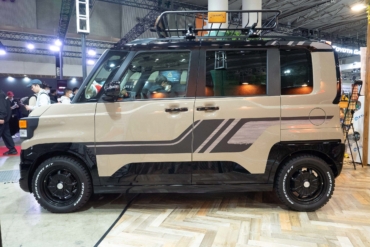Winding down a pock-marked dirt road under a canopy of weeping willow trees, the stark contrast between Hyundai’s first- and second-generation Kona clearly arose. Even on the rougher terrain, the 2024 Hyundai Kona feels surefooted and delivers a comfortable ride. It’s a far cry from the basic transportation slot the outgoing version of this cute Ute filled.
Rolling on a new, stiffer platform — which Hyundai says is also safer — called K3, the Kona now stretches 171.3 inches (172.6 inches for the N Line) from bumper to bumper. And, it rides on a longer wheelbase, 104.7 inches now, which is 2.3 inches longer than before. For good measure, the Kona is also an inch wider and a tad taller, too.
While the engines are effectively a carryover from the outgoing model, the new platform transforms the feel of the Kona. And, that means Hyundai followed the same trend as several other manufacturers, making its small, subcompact crossover SUV larger, more grown up, and more expensive.
Are the size and price hikes worth it? Time to find out. After all, this is a popular segment. And for good reason. Subcompact SUVs are small enough to easily navigate urban dwellings and simultaneously spacious enough to stuff lots of your favorite outdoor gear inside. That made it an easy decision to head to Charleston, S.C., and have a go. I started in the city and quickly ventured beyond the urban landscape.
In short: With the introduction of the itty-bitty Venue as the crossover SUV entry point, Hyundai felt liberated to allow the Kona to grow and grow up. The driving feel is more refined, while still delivering respectable fuel economy. Yes, it’s more expensive, but Hyundai packed more amenities into the Kona compared to its competition, which makes it a compelling option.
- Vehicle: 5-door, 5-seat, crossover SUV
- Dimensions: 171.3-172.6" L, 71.9" W, 62.2-63.4" H, 104.7" wheelbase
- Cargo (2nd/1st rows up): 25.5/63.7 cu.-ft.
- SE, SEL:
- Engine: 2.0L I-4
- Horsepower/Torque: 147 hp at 6,200 rpm/132 lb.-ft. at 4,500 rpm
- Transmission/Driven wheels: CVT/front- or all-wheel-drive
- Mileage: 26-29 mpg city, 29-35 mpg hwy, 27-31 mpg comb.
- N-Line, Limited:
- Engine: Turbocharged 1.6L I-4
- Horsepower/Torque: 190 hp at 6,000 rpm/195 lb.-ft. between 1,700-4,500 rpm
- Transmission/Driven wheels: 8-speed auto/front- or all-wheel-drive
- Mileage: 24-26 mph city, 29-32 mpg hwy, 26-28 mpg comb.
Pros
- Less noise while cruising on the highway than the outgoing model
- Good amount of convenience features for the price
- Nice design details, more grown-up looking
- Gobs of storage space for a crossover this size
Cons
- Driving feel less refined than leaders in the segment (like Honda HR-V)
- N-Line model feels out of place in this segment, a bit too boy racer
- Black plastic molding fender flares look a bit adolescent
2024 Hyundai Kona Review
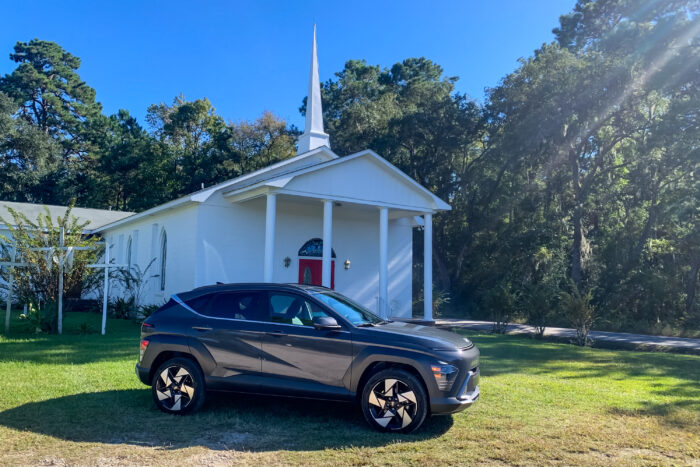
Plucky Powertrains
At this moment, you choose between four trims of Kona. The base SE and one level-up SEL come with a 2.0L, four-cylinder engine running on the more efficient Atkinson cycle to produce an adequate 147 horsepower and 132 pound-feet of torque. Paired with a continuously variable transmission (CVT), power then continues on to the front wheels. Or, for $1,500, Hyundai will happily send power to all four wheels with its HTRAC system. The 2.0L-equipped Kona is the least expensive and most efficient choice. Front-wheel-drive-equipped versions will see 31 mpg combined.
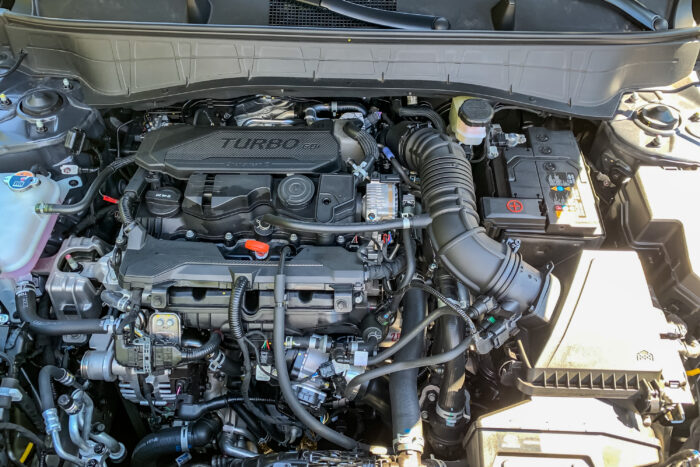
Step up to the N-Line or go all the way to Limited trims, and you instead get propelled by a turbocharged 1.6L engine that sucks in enough air to produce 190 horsepower and 195 pound-feet of torque. And, the same $1,500 gives you all-wheel-drive.
Hyundai also swaps the CVT for an eight-speed automatic transmission. An improvement! While its mpg drops to 28 combined, it’s still decent on gas. And much more satisfying to accelerate around traffic.
I said “at this moment” because the Kona Electric will return, and soon, replete with two battery packs and electric power options to boot. But it’s not quite here yet. Hyundai claims that its top-range equipment (called extended range) will go 261 miles between charge stops and deliver 201 horsepower to play with in between. I’ll be sure to test it once I get the chance.
Mostly Matured Design
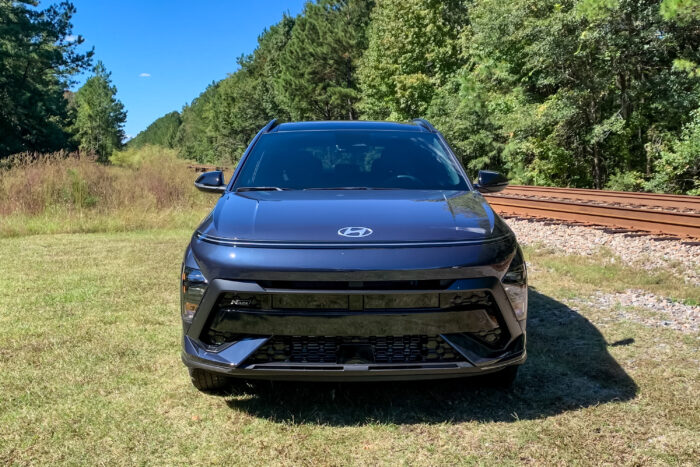
When the Kona first arrived for the 2018 model year, it looked cute. Now that it’s grown, it also matured. Ironically enough, even though the Kona Electric is not yet out, that powertrain leads the design. In front, only the lowest portions of the grille actually open to allow cooling air to components. Instead, you see a sloped front end with a thin horizontal beam that runs across the width near the top.
Farther down and to the side, you’ll see the full set of LED lights. Keep looking down and different plastics finished to mimic polished metals adorn the fascia. Overall, the look is a touch busy, but still an improvement to my eyes.
In profile, designers cut several character lines into the body to create a Zorro-like Z across the front and rear doors. That combines with black molded plastic to make up fender flares and a lower cowl piece. This bit looks the least adult to me; maybe the third-gen will sort it out. Or maybe I am just old. On the plus side, you see a long wheelbase and short front and rear overhangs, giving the Kona a more athletic stance.
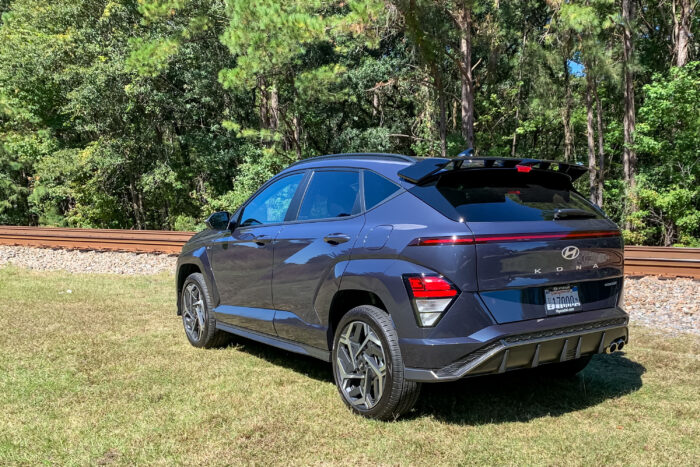
The rear largely copies the front, utilizing the same horizontal beam and lower taillights treatment. You also see more faux-polished metal. But it’s the best execution of the treatment. And, if you open the tailgate, you see that offers a lot of storage inside.
Spacious Interior
As I mentioned at the top, compared to the outgoing Kona, this one grew in every dimension, most notably in length and wheelbase. Hyundai used that to good effect to increase both passenger and cargo room. And, considering that it’s still under 175 inches long, both are impressive figures.
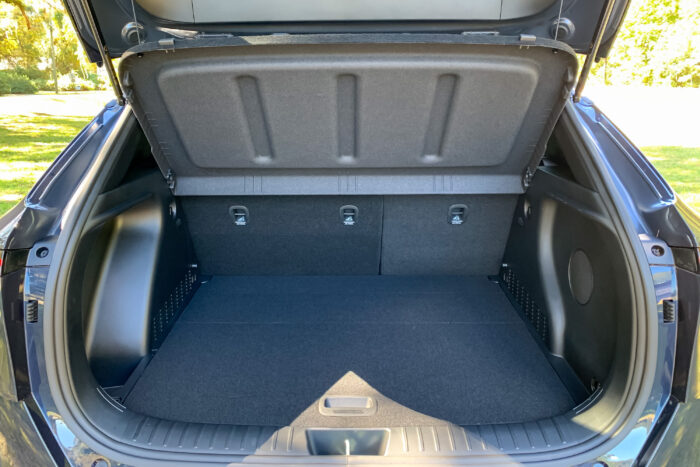
Behind the second row, you get 25.5 cubic feet of space. Moreover, the loading floor is lower than expected, making that space easy to access. Beneath the floor lies a space-saver spare and a bit of extra cargo room, too. Fold the second row down and space increases to 63.7 cubic feet, which is more than the larger Honda HR-V.
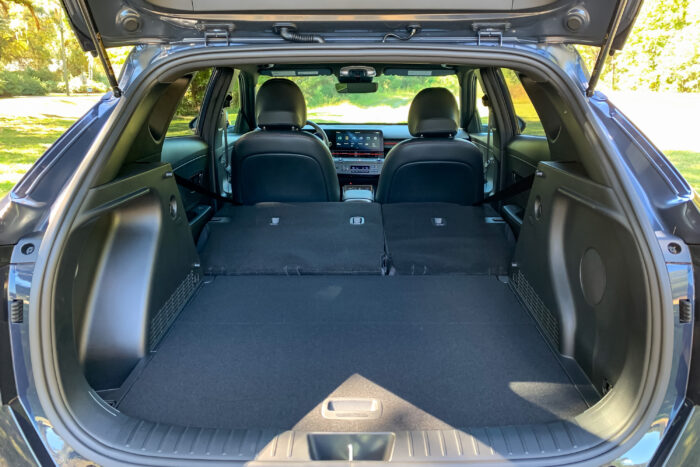
But if you have more people than things to carry, the total passenger volume is 99 cubic feet, also more than the HR-V. And, the second row provides a nice high seat bottom to provide good thigh support and plenty of knee room, even headroom, for adults. It’s accommodating.
Clever Interior
Second-row passengers also get a couple of cupholders and a fold-down armrest — as long as you don’t force a third passenger in the middle — and two USB-C ports to charge whatever needs it.
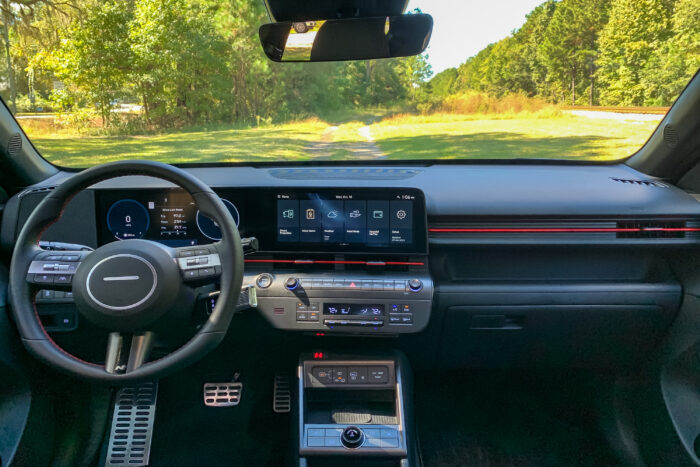
Upfront is spacious as well. Moreover, the base SE Kona includes a 12.3-inch center console touchscreen and more USB-C ports to use. Several features get added once you bump up to the SEL trim and select the $2,200 convenience package. Doing so adds a second, fully digital 12.3-inch screen, this one for the instrument cluster, as well as heated front seats and wireless smartphone charging.
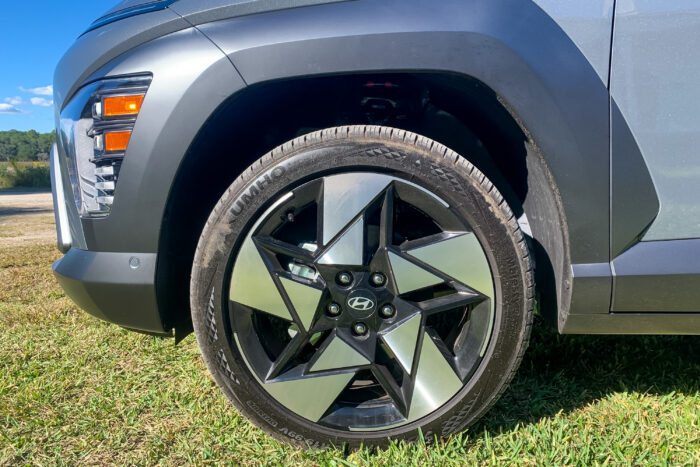
Even without the convenience package, SEL trims also get dual-zone climate control and 18-inch (instead of 17-inch) wheels to roll on.
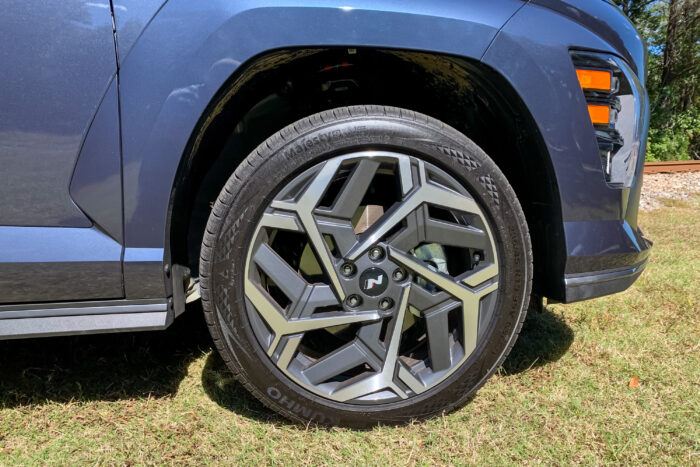
Choosing the N-Line model dresses up the interior with red accents and added touches of flair throughout. You also get a Bose sound system, “sport” metal pedals, and some Alcantara on the seats. The exterior also plays dress-up with a big rear spoiler on its back, unique front and rear bumpers, and dual exhaust tips. Hyundai also bolts on 19-inch wheels.
Choose the top-spec Limited model and Hyundai stuffs it full of luxuries. You get heated and ventilated front seats and a heated steering wheel. And Hyundai wraps the seats in a leatherette material as opposed to cloth.
And you will — eventually — get wireless Apple CarPlay and Android Auto. It’s currently available as a wired system, but Hyundai promises an over-the-air update is coming soon that will add wireless functionality.
Finally, every single Kona receives a clever and flexible lower center console storage space with push-of-a-button cup holders and plenty of removable segments and shelf spaces to give occupants lots of options for how to utilize the space. Very slick.
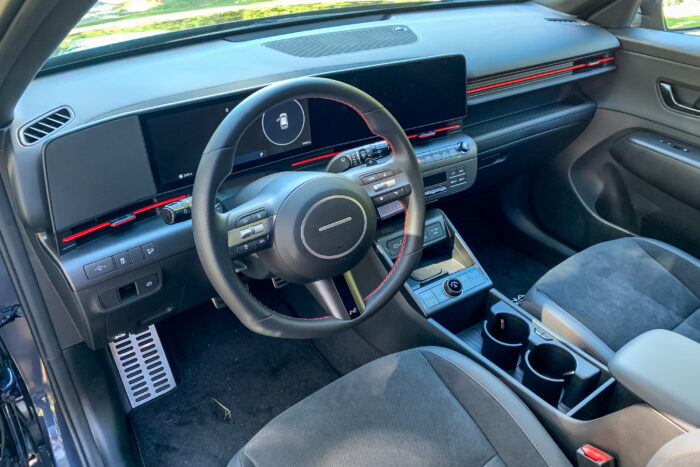
2024 Kona Driving Feel
Hyundai offered its two top trims to try on my trip to Charleston. Hence, my experience with its latest subcompact crossover was limited to the more powerful turbocharged engine. Fine by me.
I did drive the 2.0L engine and continuously variable transmission in the latest Elantra. It’s fine. But, the turbocharged 1.6 L feels refined and balanced. Furthermore, the exhaust emits a nice baritone thrum, more akin to a BMW than Hyundais of old.
The eight-speed works well as well. And 80 mph on the interstate only turns about 2,300 rpm, so the engine stays hushed. And 190 horsepower proves plenty to pull the Kona around. No complaints.
Depending on your tastes, you might find the ride a touch on the stiff side. I found it plenty compliant around the bumpier bits of downtown Charleston and enjoyed the reasonably flat body as I hustled around corners, a happy trade-off.
Hyundai put a lot of work into improving the ride as well as wind and road noise entering the cabin, especially while on the freeway, and it’s immediately noticeable. But seeing how quickly — and how much — the competition in the subcompact crossover SUV class evolved, the improvements just help the Kona keep up with the group. It is not as refined as the Honda HR-V, the class leader in the segment.
2024 Hyundai Kona Review: Summary
The 2024 Hyundai Kona SE with front-wheel-drive starts at $25,435, or $10 more than the aforementioned base Honda HR-V. So, the Korean brand no longer plays in the spend-less-here category. And, if you’re looking at a top-spec all-wheel-drive Limited Kona, prepare to spend $34,485. Yeah, nearly $35K!
But go one level deeper and Hyundai indeed still plays the value card here. For $35K, you get a lot of luxuries and driving assistance systems and all kinds of other widgets and doodads that other brands don’t even offer in this class. You don’t spend less money, but you do get more for your money.
By the way, Hyundai Smartsense, as it’s called, comes standard on the Kona and includes collision avoidance assist, lane keep and follow assist, blind spot warning, automatic high beams, and stuff like that. If you want adaptive cruise control and other similar features, you’ll need to get the SEL with convenience trim or higher.
However you assess value, the Kona delivers space, comfort, convenience, and respectable power in a much more grownup-than-before package. It might not be for everyone. But it is for a lot more people than it used to be.
